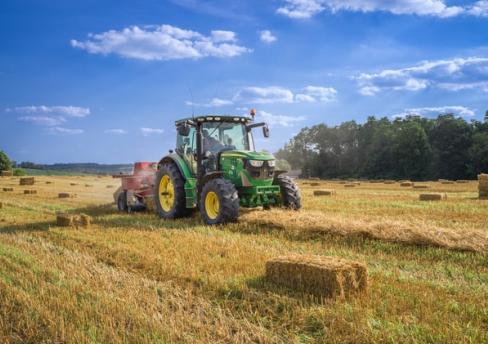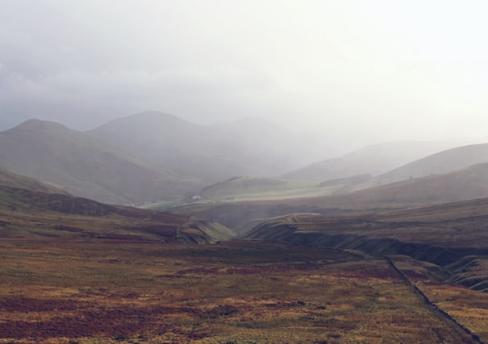For a number of years now, Morton Fraser has sponsored the Honey Marquee at the Royal Highland Show. The Honey Marquee is run by the Scottish Beekeepers' Association and through our continuing sponsorship of this we have built close connections with the SBA. Their President, Alan Riach, is well known to us and has attended the Edinburgh office on a number of occasions to speak about bee-keeping to staff and also, on one occasion, to primary children from George Heriot's School, which we facilitated. Given that June would ordinarily see us at the RHS, partnering with the SBA, and in recognition of the recent World Bee Day, we thought it would be a good initiative to interview Alan for our bulletin.
I therefore had the enjoyable task of discussing this topic with Alan who is also Education Officer of the Scottish Beekeepers' Association. I posed the questions and Alan who is very knowledgeable provided the answers which I hope will interest you all.
Whilst we have all been cooried doon in our “hives” the honeybees have been busy in our meadows and hedgerows busying themselves in their pollination tasks and reaping the flowers’ gifts of nectar and pollen.
Alan, I know enough to be able to say that honeybees are of course just one species of bee. Can you tell me how many species there are?
In the UK there are about 24 species of bumblebee and a mighty 240 species of solitary bees (mason bees, leafcutters etc). The bumblebees are usually the most easily identified being quite large and furry and loud. Many of the solitary bees and indeed the honeybee are less colourful and thus less easy to identify.
How do honey bees survive the winter?
Honeybees have evolved the trick of being able to lay in stores (honey) for winter, (a trick that we humans have also managed with grains etc. The large population (typically 8 to 10 thousand) that they can take through winter, when it is too cold to fly and when there are no flowers anyway, enables the honeybee colony to suddenly “switch on” when the flowers (sources of nectar and pollen), appear in spring. Backed up by all those foragers and nurses, the queen can lay 1500 eggs per day, leading, 3 weeks later to 1500 new bees and next day another 1500 and so on. The colony thus builds up to its summer high of 40 or 50 thousand honeybees very quickly.
In the other bee species (& also in wasps), only the new queens survive over winter. These are the large bumbles (& wasps) that you see in early spring. They collect food, start a nest, and eventually produce a few dozen (smaller) workers. The bumble bee queen (wasps as well), then stays in her nest and the smaller workers go foraging. Their colonies thus build up slowly, never achieving a population of much more than a thousand or so. If you want pollinators in quantity, the honeybee thus has a major advantage.
How much do we rely on bees as pollinators?
It is estimated that about 30% of food in the human food chain has been facilitated by bees and other pollinators. All fruits and vegetables – lots of the good stuff.
What is honey and how is it produced by the bees?
The honey produced by the bees depends on the plant visited. Honey is composed of the two simple sugars, fructose, and glucose with the additions of many magic bee enzymes. Glucose is less soluble than fructose and so honeys high in glucose tend to granulate (come out of solution) much quicker. Bees harvest nectar at up to 60% water content but they know as all good farmers, that you must dry stuff to make it keep. They dry it down to 16 or 17% before capping the cells with wax lids. The drying is carried out by spreading the honey in thin films on the surfaces of empty cells and then wafting air over it with their wings, the colony being able to create a continuous draft of air through the hive carrying the water vapour out through the entrance.
Although we don’t tend to think of them as flowers, the largest flowering plants are hardwood trees & bushes, hawthorn, blackthorn, willow, sycamores, chestnuts, limes & of course fruit trees, provide serious amounts of nectar as well as enhancing farm properties by providing interest, shelter and shade.
Gorse (Whins) is a valuable source of early pollen and nectar for bees, as it has an extended flowering season, as the old saying goes “When gorse is out of bloom, kissing’s out of season”.
How can we get more involved with beekeeping?
The local beekeeping associations, of which there are 44 in Scotland affiliated to the central charity Scottish Beekeepers Association run beginner courses for budding beekeepers. You can also help beginners by offering to host two or three hives on a sheltered corner of your farm or garden (there’s sure to be a jar or two of honey available). For your local beekeeping association see the Scottish Beekeepers website. You can also access some video clips about beekeeping at Bee-Basics in the Advice section of that website.
The content of this webpage is for information only and is not intended to be construed as legal advice and should not be treated as a substitute for specific advice. Morton Fraser LLP accepts no responsibility for the content of any third party website to which this webpage refers. Morton Fraser LLP is authorised and regulated by the Financial Conduct Authority.










